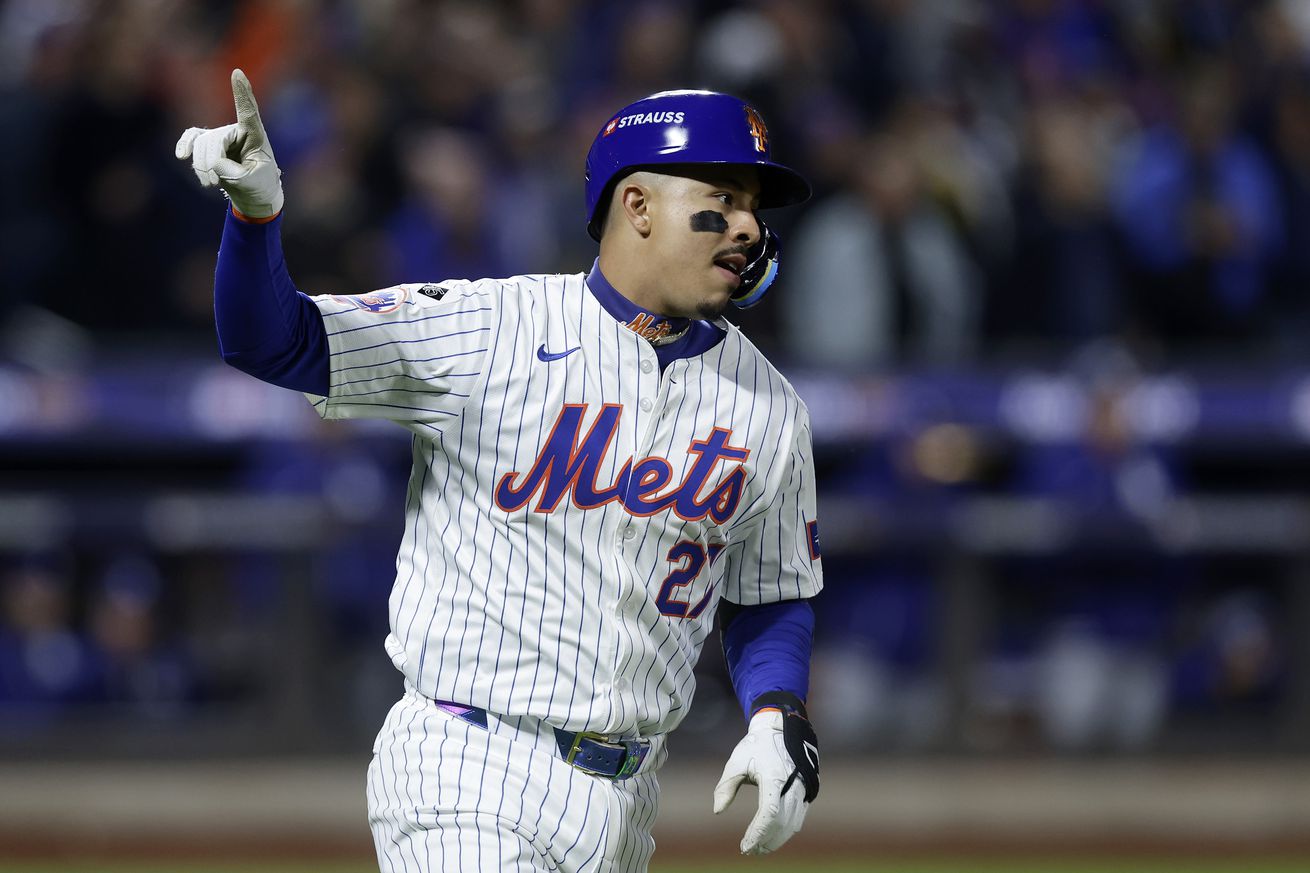
Vientos broke out in a big way last year, and now he has the runway to become a real star in the league.
Last year, a certain individual employed by this website penned a 2024 season preview for Mark Vientos, which explained that the former top prospect had a clear path to playing time at DH at that very moment, and that it would probably amount to his last real chance with the Mets—unless, of course, the Mets signed J.D. Martinez.
Well, later that very day, the Mets signed Martinez to be their DH, blocking Vientos to his clearest path to at-bats and banishing the young slugger back to Triple-A Syracuse. The move pretty sufficiently displayed the team’s opinion of Vientos at the time; he hadn’t earned a spot on the team, had shown no indication he had made strides to fix the holes in his offensive game, and would have to demonstrate he had made those changes to earn a spot back in the big leagues.
As I—I mean uh, a certain member of the staff—noted last year in that column, Vientos’s offensive woes stemmed from three major issues that he needed to improve upon if he wanted any chance to stick in the big leagues: his chase rate, his launch angle, and his in-zone contact rate. He hit the ball plenty hard enough, but he would never get enough out of it unless he improved at least one or more of those traits.
Well, luckily for Vientos, Brett Baty also continued to struggle at the big league level and did nothing to entrench himself as the third baseman of the future, so Vientos wound up getting his chance after all when he was recalled to take over for Baty at third in late May.
And Vientos completely ran with it and never looked back. He hit .266/.322/.516 with 27 homers across 454 PAs over the rest of the season, good for a 133 wRC+, and continued his hot hitting into October, mashing 5 more homers in the 13 playoff games he appeared in.
Despite not showing any signs of growth in spring, Vientos apparently went to work in Syracuse, and perhaps with some help from Carlos Beltrán and Martinez himself, improved each of those three areas of his offensive profile to completely change himself as a hitter. He improved his in-zone contact by a few points and kept the ball off the ground more, but the biggest improvement was his in his chase rate. That dropped from 37.3% in 2023 to 31.1% last year, according to FanGraphs, and he increased his walk rate from 4.3% to 7.3%.
When you dig even deeper, you can really start to appreciate how much Vientos improved his approach even beyond the top line numbers. According to Robert Orr’s ShinyApp, Vientos took far fewer hittable pitches and whiffed at fewer breaking balls last year than he did in 2023. In other words, he not only chased less out of the zone, but started hunting more mistakes in the zone and capitalizing in hitters counts more. This is reflected in his SEAGER stat, which went from 8.7 (11th percentile) in 2023 to 17.3 (78th percentile) in 2024. That change in his approach allowed him to make more damage on contact and start crushing the ball the way he’s capable of.
And there’s still room for more improvement, too. As mentioned, Vientos improved his launch angle a bit and dropped his ground ball rate by seven points to 44.2% last year, but that is still a fairly middle-of-the-road number. Anyone who has watched him can tell you that Vientos is a painfully slow runner, so there’s very little value to him hitting the ball on the ground. If he can drop that number even further—ideally you’d like to see it under 40%—and trade those grounders for line drives and fly balls, Vientos should have a much easier time maintaining his 2024 levels of production going forward.
And unlike last year, when it wasn’t clear that Vientos was actually capable of making major adjustments after years of having the same offensive issues and never fixing any of them, it’s much easier to see him making those continued adjustments and getting even better now that he’s shown the ability to learn and improve.
Defensively, Vientos is currently penciled in to play either first or third base, depending on the outcome of the ongoing Pete Alonso/Mets first base saga. At third, where he was feared to be completely unplayable, he has done the work to improve himself there quite a bit as well. He’s still a sub-par defender at the hot corner and will never be mistaken for Brooks Robinson due to his glacial foot speed and deliberate actions, but he’s gotten himself to level that you can live with over there. At first base, Vientos has displayed poor footwork in the past, but his lack of reps there cloud what his first base defense could actually look like full-time. The 25-year-old still profiles best as a DH, and that’s likely his future home once he gets older and even slower, but for now he will likely see lots of time in the field for the 2025 Mets.
Regardless of where he plays, Vientos enters 2025 as one of the impact bats in the Mets’ lineup, and he’ll likely be penciled in as a middle-of-the-order bat and lineup protection for Juan Soto on Opening Day. What a difference a year makes, indeed.